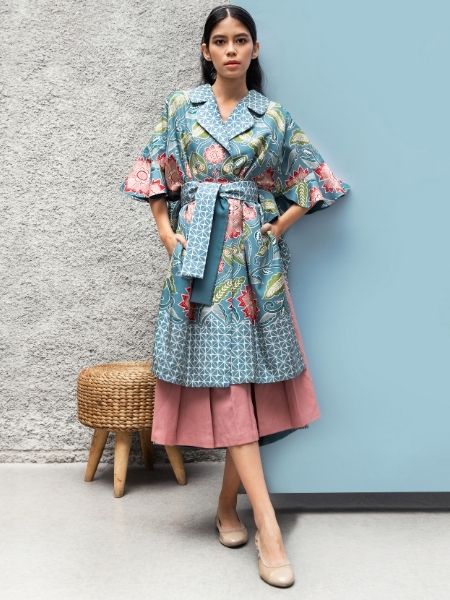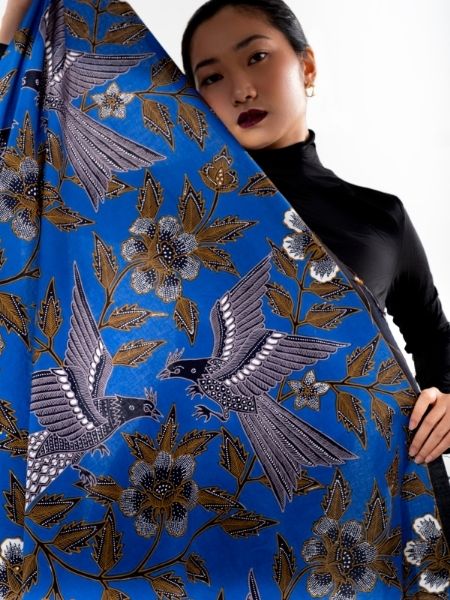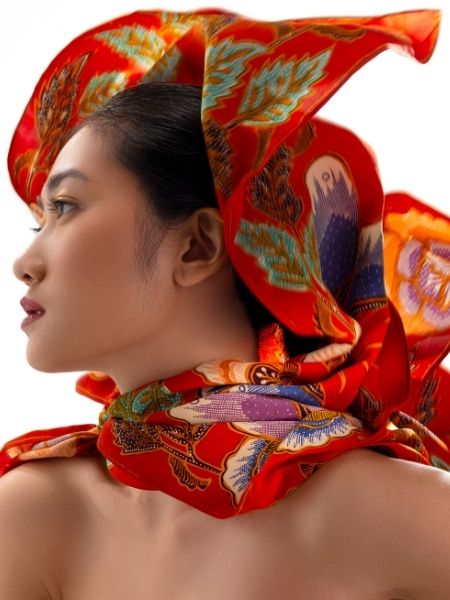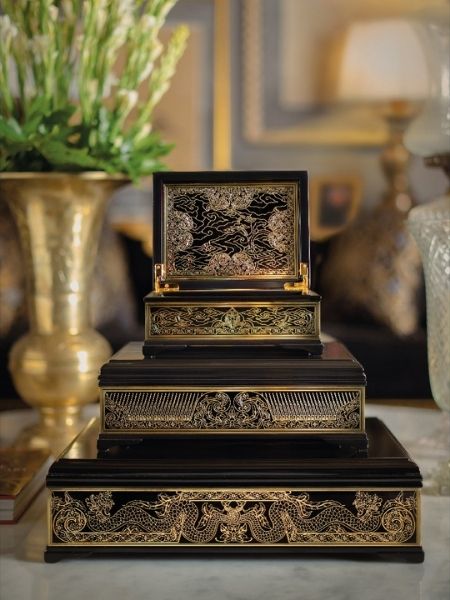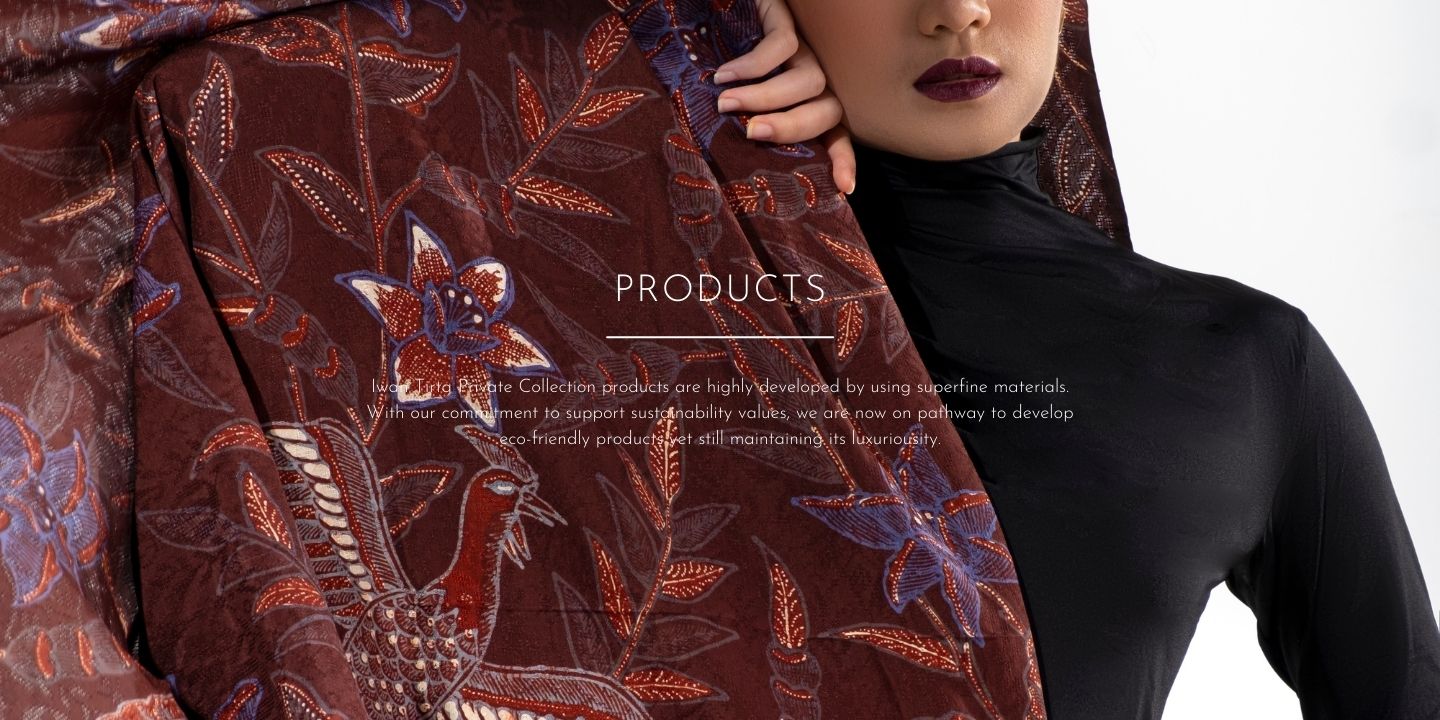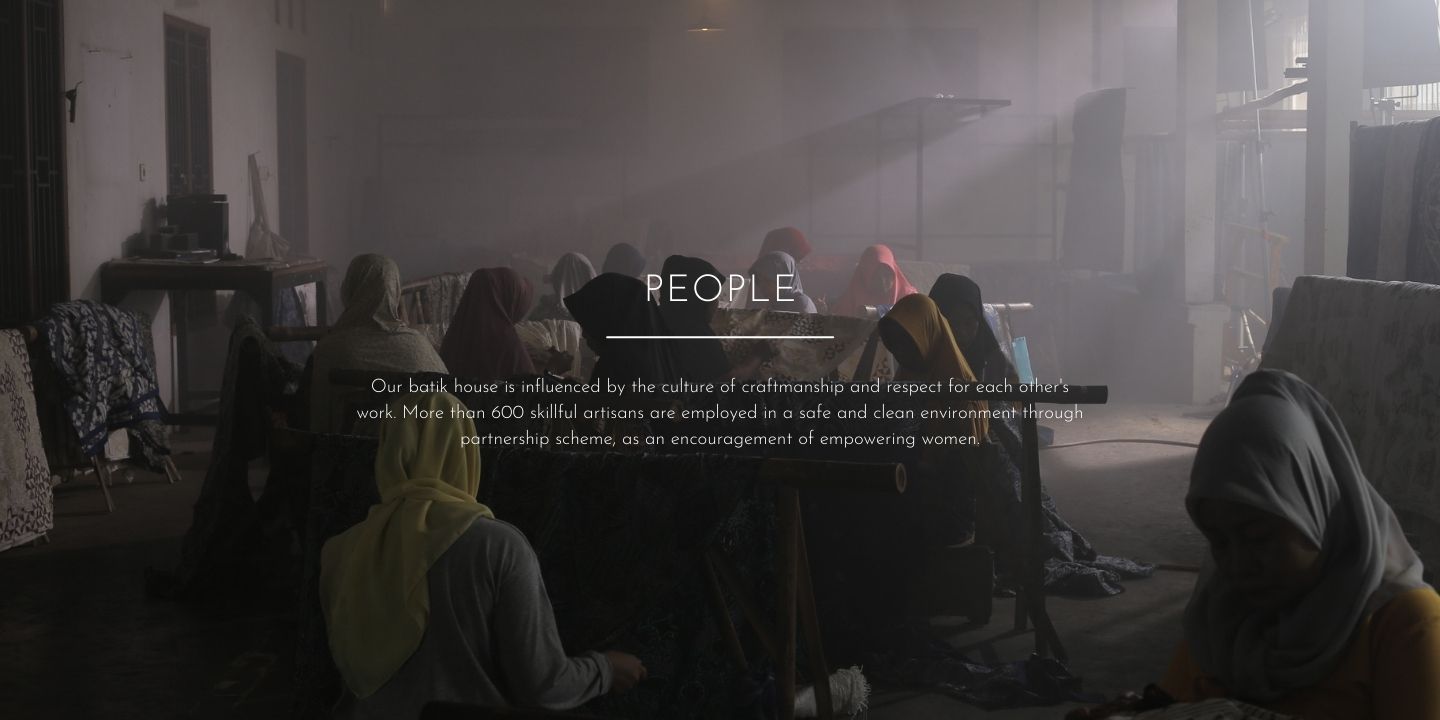In honour to Iwan Tirta's journey as a maestro from the beginning to the present, #Mataguru2020 is a story about a complete achievement, yet about a perspective of Iwan Tirta as an apprentice yet a maestro in the journey of batik as an Indonesian heritage.#Mataguru2020 runway show will be presented in 3 sequences that is inspired by chapters in traditional puppet show (wayang) also as used by Iwan Tirta himself in his book. The upcoming #Mataguru2020 collection series is adapted from the journey of Iwan Tirta to preserving the art of batik as written in his book, “Batik, A Play of Light and Shades”. The Batik patterns that are incised in an array of the collections, inspired by parts from his book, which is Talu, Adeg Jejer, and Adeg Sabrang. Seeing Batik as part of a sacred art from Javanese Royal Kingdom, Iwan Tirta is giving his perspective regarding the batik art through “Wayang Kulit” or shadow puppet performance. Just like a puppeteer or so-called "dalang", the late Iwan Tirta continuously desires to give a personal touch to the art of batik. The personal touch that he passed on, is mainly influenced from the rich cultural milestones of his formative years and of his subsequent experiences as a batik designer.
Talu - The overture.
It is the opening sequence of "Wayang Purwa" performance and sets the mood. In rural Java, the sonorous sounds of large gongs carry for long distance to entice and beckon people to come and see the play. In Iwan Tirta's book, Talu chapter tells about the root of batik starting from the textile traditions of Indonesia. For the opening sequence, "Talu" will be featured "Pohon Hayat" (the tree of life) as inspired by the gunungan from wayang kulit or shadow puppet performance. "Pohon Hayat" symbolizes the origin of life, between human and the universe.The array patterns from "Talu" sequence will be appeared in ranging of grey-brownish hues. This color range was inspired by the play of light and shadow in the "Wayang Kulit" or shadow puppet performance.
Adeg Jejer – The court scene.
The last beat of the gong used to recognize as the signal, for the end of the overture or "Talu". The puppet master now prepares for the opening scene or "Adeg Jejer". With his melodious voice, the puppet master now begins his litany, giving a narrative of the court scene.
In Java and other parts of the archipelago, courts were the seat of tastemaking. They strongly influenced the arts by commissioning craftsmen to make the finest products for their use. Thus, the courts have played a pivotal role in perfecting the art of batik. Classic motifs from the Javanese Royal Kingdom, such as Parang and Gurdo which are the root of Indonesian batik art 4, will be featured in this "Adeg Jejer" sequence.The array patterns from “Adeg Jejer" sequence will be appeared in ranging of sogan color, which is the origin color of batik from Javanese Royal Kingdom.
Adeg Sabrang – Outside influence
After the court scene, the “Dalang” invariably moves on to the “Adeg Sabrang”, which translates “the scene from the other region or across the sea” . The foreign element could be defined as everything or everyone that is non-Javanese. This would include Chinese and European influence. Batik has always been closely connected with fashion even in early court life. In his opportunity to study abroad, so many foreign cultural influences were received by Iwan Tirta. He experimented in making batik due to demands of his clientele at the time. But it does not make Iwan Tirta forgot the roots of batik itself. So that batik often used to introduce Indoneia's culture into the international area. The acculturation motifs from overseas such as "Peksi" from China, "Boketan" from Europe, will be featured in this "Adeg Sabrang" sequence."Adeg Sabrang" sequence will be presented in vibrant colors as the signature of the coastal batik which influenced by the outside culture.

.jpg)
